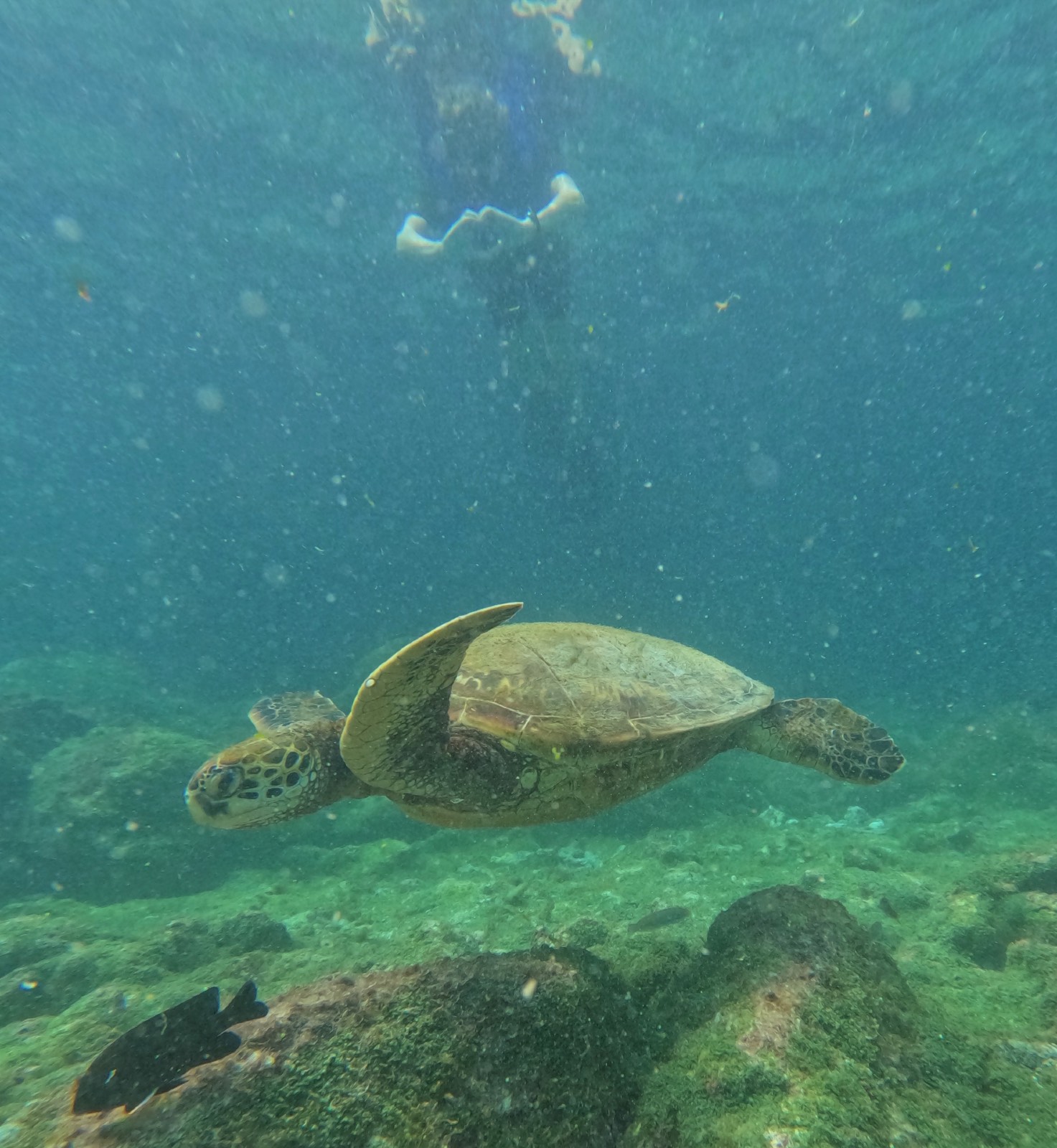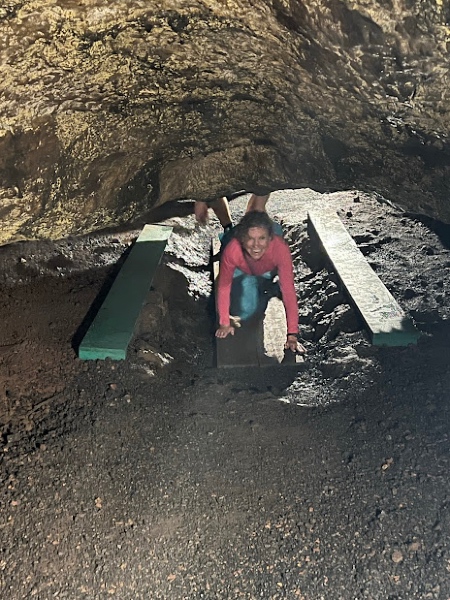Student Reflection
Galapagos Student Reflection: Christie Miller
 The trip to the Galapagos was amazing in so many ways. One way was to see the evolution concepts come to life. In the chapter by Jackson (1993), we read about the evolution in the Galapagos including the finches, tortoises, marine iguanas and how they adapted based on food availability. It was one thing to read about it, but it was quite another to see it in person. For example, we saw the vegetarian finch ripping apart leaves with its sharp beak and the cactus finch eating cactus with its unique shaped beak. See photos. The saddleback tortoises carapace allowed it to reach high branches while the domed tortoises ate grasses. The marine adapted to eating algae on rocks when food was scarce on land. It was fascinating to see these adaptations in person.
The trip to the Galapagos was amazing in so many ways. One way was to see the evolution concepts come to life. In the chapter by Jackson (1993), we read about the evolution in the Galapagos including the finches, tortoises, marine iguanas and how they adapted based on food availability. It was one thing to read about it, but it was quite another to see it in person. For example, we saw the vegetarian finch ripping apart leaves with its sharp beak and the cactus finch eating cactus with its unique shaped beak. See photos. The saddleback tortoises carapace allowed it to reach high branches while the domed tortoises ate grasses. The marine adapted to eating algae on rocks when food was scarce on land. It was fascinating to see these adaptations in person.
Another way the trip was amazing was meeting the community partners and hearing about the work they do to help the islands and the plants and animals that live there. Sofi’s work with the whale sharks is amazing! The whole mission of ECOS and MOLAs with place-based education is incredible. The ABG officers spend their days removing invasive snails, which is not an easy task, as we learned first hand. Freddy’s work with the tortoises was incredible. The caliber of our guest speakers was solidified when we saw their pictures displayed at the Darwin Research Station. We were so fortunate to hear about conservation from people who are doing the work.
The inquiry projects were a highlight for me too. I enjoyed the opportunity to sit and observe nature in silence for extended periods of time. I was counting birds and marine iguana sneezes in each of the inquiry projects, but it was more than that. I was observing details of nature, which is something I don’t often take the time to do, as I am always working, running errands, talking to people, or just being busy. It was fun to answer a question we had come up with by observing what was happening. I enjoyed hearing about the questions the other groups asked and answered with their observations. It made me think about how to incorporate more inquiry into my work at the environmental center. 
Another way the trip was impactful was on a personal level with confidence building. As the oldest person on the trip, I wasn’t sure how I would handle some of the physical aspects. As it turned out, I was able to do everything the younger people could do. I had one moment of weakness after hiking to breakfast, but quickly overcame that too. It felt good to hike without getting winded, to eat the food without stomach issues, to snorkel without having a panic attack. I kept a positive attitude throughout and was able to do everything. Perhaps I realized age is not really an obstacle if my mental attitude is strong.
Inquiry was one of the highlights from the trip and is also one of Project Dragonfly’s core focus areas. After the experience in the Galapagos, I went back and re-read the Myers & Myers(2009) article to see how I might be able to use inquiry with the visitors at the environmental center where I work. Community engagement was another highlight from the trip. I was so impressed with the MOLAS and how young students could make such a positive difference with their sea turtle and plastic projects. ECOS’s work with both internal and external groups to get people engaged in conservation through hands-on projects helped build local and global understanding of the issues in the Galapagos. Both participants in ECOS and MOLAS demonstrated the triadic framework discussed in the Korach and McConnell (2021) article. Nature, the community and their belief system were all connected to their self concept and that led them to do the work they are doing to preserve the Galapagos Islands. Environmental stewardship was the theme of the course and a highlight for the trip. It seemed that everyone we met was working to keep the invasive species out to save the native plants and animals. It was great to be a part of the invasive snail removal, the weevil removal at the coffee plantation, and microplastics removal at the beach. It was great to learn and about and participate in the conservation efforts in the Galapagos Islands.
I tried some poetry:
Acrostic
Going to the Galapagos Islands
Accompanied by teachers and peers
Learning about evolution
Assisting with conservation
Participating in discussions
Appreciating the wildlife
Gaining a new perspective
Opening up to new ideas
Surpassing all expectations
Haiku
Awestruck and Amazed
Tortoises, Birds, Iguanas
Lifetime memories
